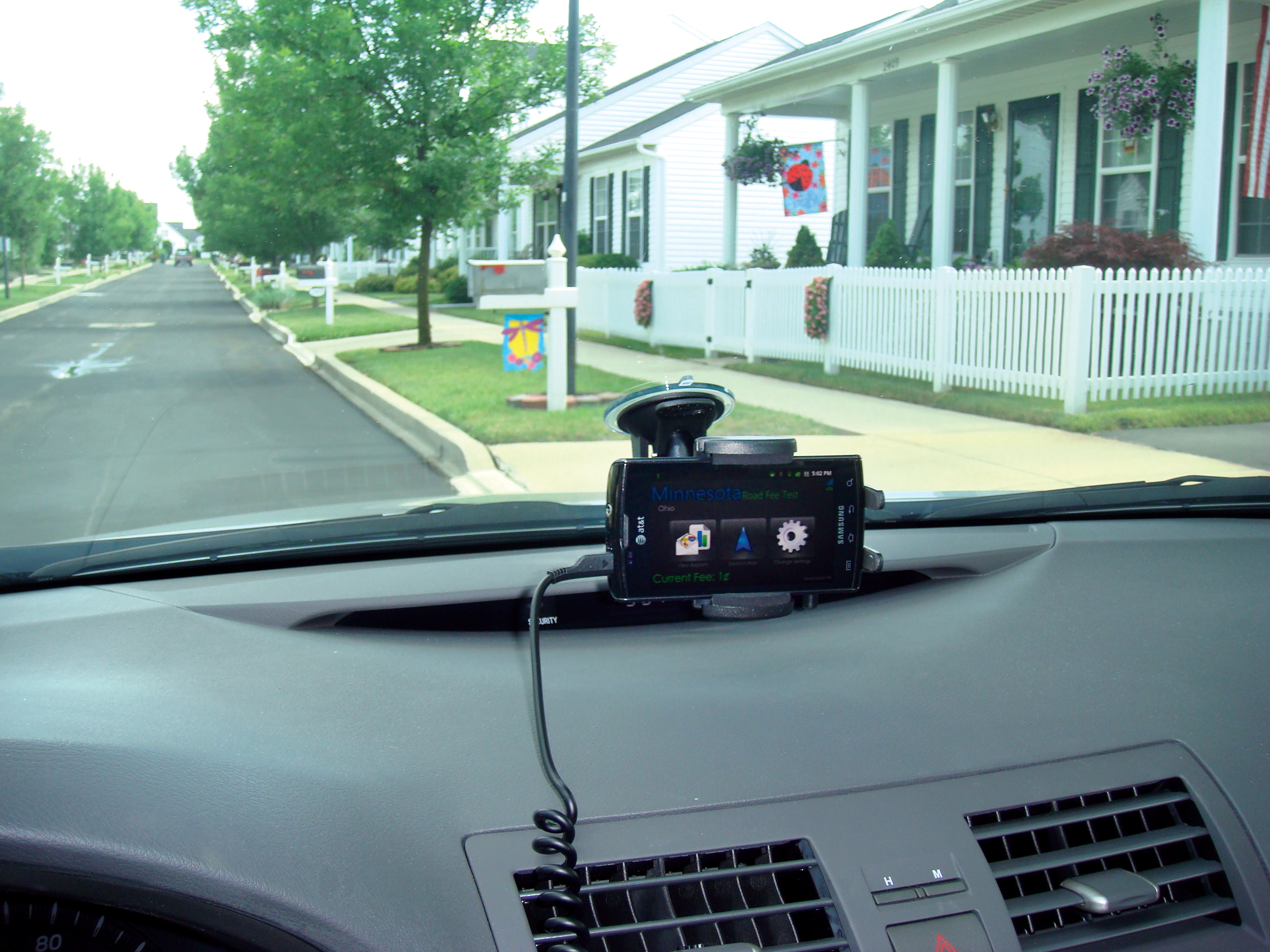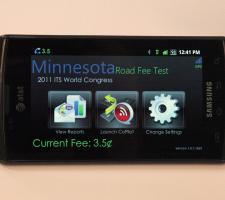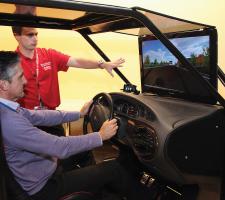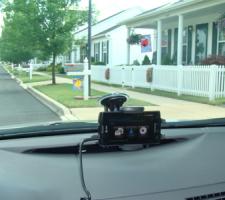
Smartphones offer the best of both worlds, says Ben Pierce. Sophisticated onboard units can be used without procurement and cost burdens
A new project is under way in Minnesota, investigating whether smartphones are technically and publicly acceptable for use in road user charging. Jason Barnes reports
The Minnesota Road Fee Test (MRFT), showcased at the
Incentives have been devised to encourage use of the smartphone option.
These take the form of discounted permile charges for the journeys the volunteers make. The smartphone app allows time, distance and place data to be gathered and for the charges to be varied with the aim of reducing peak time congestion. Should volunteers choose not to use the smartphone they pay a higher, flat rate per mile based on vehicle odometer readings.
The MRFT stems from a Bill passed in 2007 by the Minnesota state government's legislature, says programme manager Ben Pierce of Battelle National Security Global Business & Transportation.
"Like many states, Minnesota faces significant budgetary shortfalls from its current road infrastructure financing streams - the gas, vehicle registration and vehicle sales taxes. The legislature therefore set aside US$5million for the
COTS technology
"There were certain tenets. For instance, the work done by MnDOT was not to repeat work done by other states, such as Oregon and Iowa, to find gas tax alternatives. A commercial 'off the shelf' (COTS) solution was favoured." The COTS presumption led naturally to consideration of smartphone technology and its impact on lifestyle choices. Pierce says: "The transportation industry needs to recognise very quickly what smartphones can and cannot do. People now tend not to buy just a 'phone' or a 'calculator'. Instead, they buy multi-use devices and importantly, they demonstrate a real willingness to use them."Personal navigation devices were looked at as a technology option for the MRFT, but the fact is that they are singleuse devices and specifically designed that way. Some of the processors used are just about good enough to run navigation and a little bit extra but they cannot cope with RUC.
The ubiquity of GPS in smartphones was a factor in the choice of technology, along with their processing power, memory and the ease with which it is possible to gain access to the phone to create and manipulate apps, Pierce says.
His team alighted on the Samsung Galaxy S smartphone as the most suitable platform.
Differentiators and developments
"At the time we were conducting our technical evaluation, the Galaxy S boasted the largest screen and fastest processor on the market," Pierce continues. "Now, just six to seven monthson, it's already three generations behind. That gives some idea of the speed of consumer electronics development."We're also leveraging the
RUC implementation
However, Pierce feels it would be unwise to view GPS as the only solution for an area wide scheme. "GPS certainly offers a number of advantages, including system management benefits. But there is always going to be an element of the population wholly averse to the technology due to suspicions over privacy or other reasons and they have to be accommodated somehow. Looking forward I can see GPS being complemented and augmented by ground-based repeaters and dedicated short range communication. There is always going to be an infrastructure element. A lot of work has gone into improving cell phone triangulation, for instance, and I think we'll see the rebuilding and refocusing of some existing infrastructures on new applications."Enforcement and choice
Pierce stresses that the Minnesota scheme is currently a trial, with two voluntary aspects - for participating in the MRFT and the option of using the smartphone app. "Any smartphone-based charging system has to be optional, for the time being at least. One solution might be to introduce it as an option with mileages and fees reconciled at annual vehicle inspections. If charges are outstanding then road users' license plates could be withheld."With audit trails, a major challenge is to draw a line between privacy and accountability. With our smartphone app, mileage fees are collected in different categories and then uploaded. We therefore know the distance and types of miles travelled but not the true specifics of someone's affairs. For settling reconciliation disputes, we can prove that 'a' device was at a certain location, but we cannot connect that device to a specific user without the user providing additional information on their trips. This was intentional; the system has been designed to associate journey information with devices, not with the user themselves."
Tag versus smartphone
Another advantage of using smartphones is that users also effectively supply their own onboard unit, relieving scheme operators of significant procurement and cost burdens associated with conventional tag charging systems."This is all inter-related," Pierce continues. "The smartphone is an onboard unit, to all intents and purposes.
The difference is that users buy them at consumer electronics outlets. The MRFT is demonstrating the best of both worlds.
There are the best aspects of sophisticated onboard technology with built-in calculation of mileage, effectively giving a new toll plaza every second.
There is also privacy."
Initial results
The MRFT went live on 12 September this year, so has been in the field only for a short time. However, at the time of writing, at the end of October 2011, the initial 150 users (the others will follow over time) had logged 200,000 miles and 5,000 individual trips. First impressions have been that, in general, the smartphones are being used and users are comfortable with the technology.Each scheme volunteer will participate for six months. This, says Pierce, will allow the robustness and longevity of the scheme to be assessed. For the first two months of participation, users are not charged, being left to gain familiarity with the app's use. For the next four months, they are charged. After six months, the smartphones used are restored to their factory settings and the scheme and its volunteers go their separate ways.
Pierce stops short of predicting whether the MRFT will eventually be rolled out on a permanent basis. That, he notes, is a political decision. But there are several important points to note: "Cars are becoming more fuel efficient.
We're also seeing more and more alternatively powered vehicles on the road which pay little or no fuel tax. At the same time we have a large and growing road system which needs to be maintained, so the funding shortfalls which currently exist will persist and grow.
"Whether smartphone-based RUC will eventually be implemented, I do not know. But we're proving that it's technologically possible at least."














